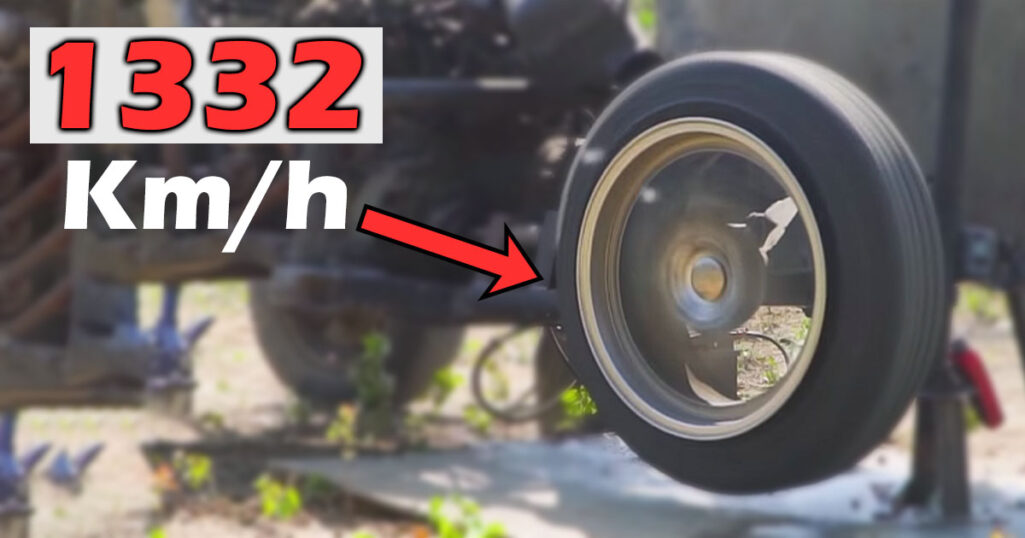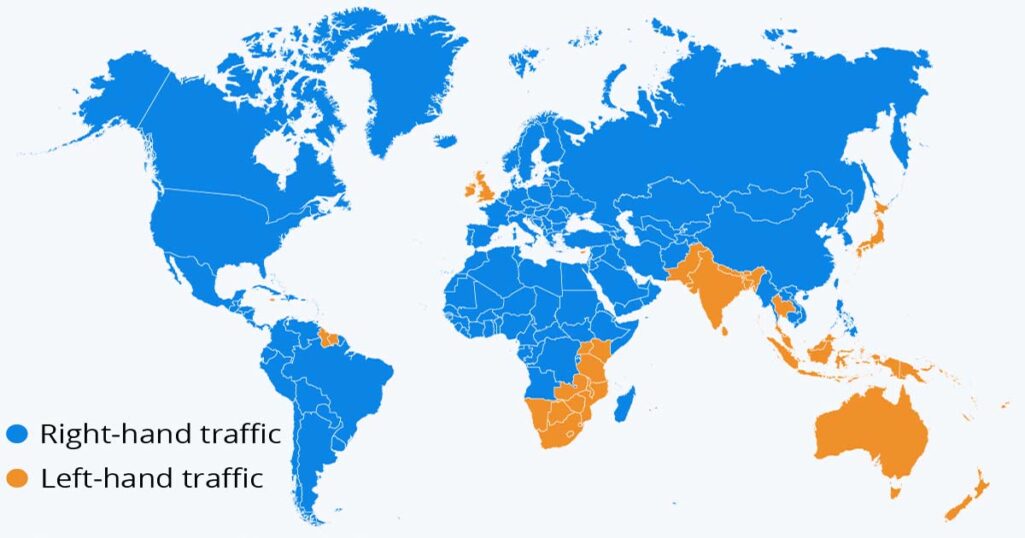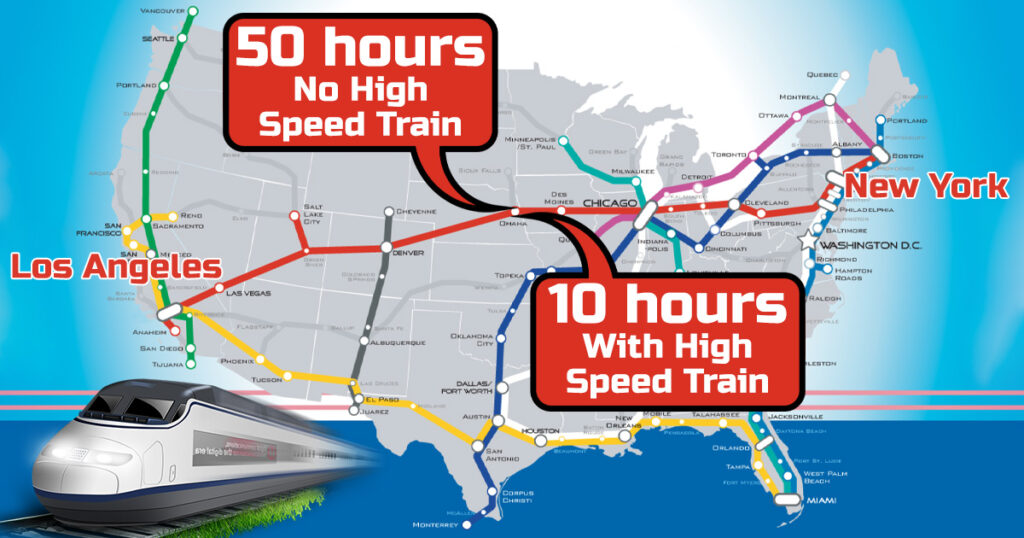
Chinese high-speed rail has surpassed 19,000 miles, making it the largest and fastest in the world. The bullet trains of Japan, which can travel at speeds of up to 200 mph, have been in operation since the 1960s. They have transported almost 9 billion people without losing a single passenger. TGV high-speed train service began in France in 1981, and the rest of Europe followed shortly.
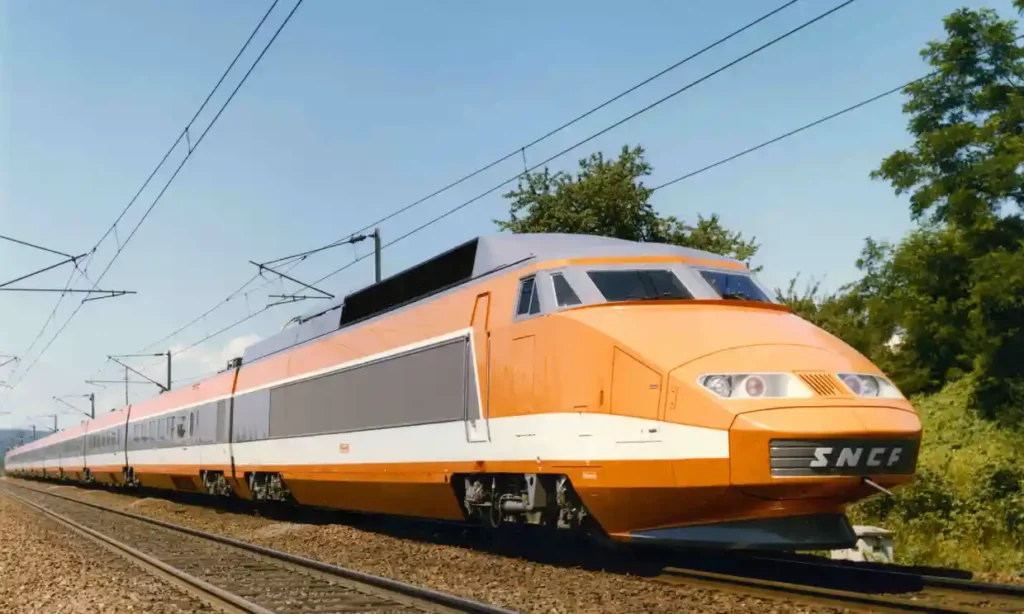
With the exception of the Acela line in the Northeast Corridor, the United States does not have any true high-speed trains. Just 34 out of 457 miles may be traveled at 150 mph on the Acela line. Between New York and Boston, it travels at an average speed of roughly 65 mph. This is very slow compared to what speeds trains are traveling now.
So why the US, which is considered the leader in development and technological advancement, is still “lagging” behind many countries in the high-speed train networks? Is it an economic problem? Or maybe a cultural mindset? It is actually due to many reasons and opinions that kept the US from building its high-speed rail network.
America Is Huge!
In comparison to other countries with high-speed rail networks, such as Germany and Japan, the US is much bigger. Take a look at Russia to see that they have yet to build a bullet train between Moscow and Vladivostok, 3987 miles (6416 km). The distances between America’s largest cities are huge. For example, most of China’s major cities are situated significantly closer to one another than the most populated city regions in the United States, making high-speed rail a more practical option in China.

The distance from Shanghai to Beijing, the largest cities in china by population, is about 819 miles (1318 km) and would take about 4.5 – 6.5 hours to travel by train. Now imagine the following scenario: if we would like to do the same in the US and connect the largest cities by population by rail network, we would be connecting New York with Los Angeles having to build over 2,446 miles (3,936 km) of rail network! Now imagine how long would such a trip take!
Low Population Density

High-speed rail makes sense when there are several densely populated cities close to one another and no large geological constraints to slow down the trains. However, despite having a total population of almost 330 million, much of America is still empty land. Our most populous cities actually have a lower population density than some provinces in China. While a high-speed rail route between New York and Washington, DC may make sense, it’s hard to see more than a handful of people in Missoula, Montana, needing to visit Phoenix, Arizona, or that high-speed rail would get them there quicker and cheaper than a car or an airliner.
If you’re ever flying over the United States on a clear day, you’ll see how very different it is from the overpopulated and similar countries of Asia and Europe below. For example, Dallas, our fourth-largest metro region, has a lower population density than Hebei, a Chinese province that isn’t even particularly populated. This is likely the main element that makes the economics of high-speed trains so problematic.
American Culture
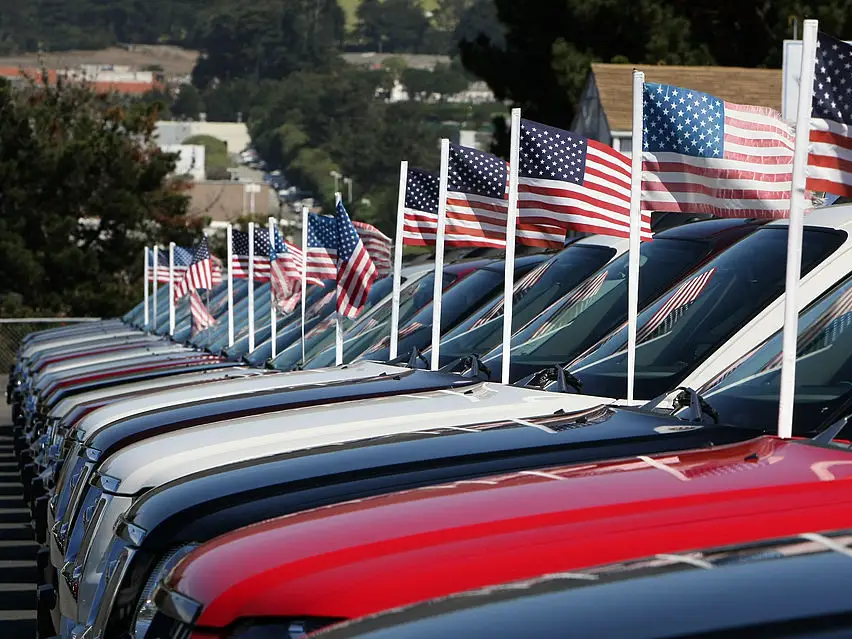
Most Americans value independence and freedom. This means people in the United States care more about events in their own communities than in other areas. They are uncomfortable or opposed to paying the taxes needed to support massive public projects like high-speed rail. The typical American will not be persuaded by your arguments that the country requires high-speed rail and that they should be ready to pay the additional taxes to fund it. No matter how many individuals might profit from it, it goes against our cultural beliefs that we should keep the profits of our work and give them to the government in the form of taxes.
Also, the car plays a significant role in American society. Americans of all ages consider their cars to be major elements of their identities; for young people, owning a car is almost a milestone in their lives. Many working-age persons in the United States cannot bear to be without their vehicles. There are hardly any adults who rely only on public transit to move around, with the exception of those living in densely populated coastal cities with limited land areas. However, things might start changing after the gas costs skyrocket.
Rail Infrastructure vs. Properties
Nowadays, purchasing property along a relatively straight line is one of the most expensive aspects of establishing new rail lines (trains cannot go at high speeds over too sharp a curve). Buying land in the United States is quite expensive because of the country’s strict property laws. When the property was inexpensive, the United States had little trouble laying railroad tracks across the country.

The rails on which we rely currently aren’t always as straightforward as they should be. In order to construct more modern, higher-quality, and more directly routed rail lines, the government would have to purchase all land between A and B and remove any obstacles in the way. What was to be farmland between A and B is now very desirable real estate that will cost a lot of money to acquire.
Conclusion
High-speed rail is an expensive, outmoded technology. Not only is it more costly and inconvenient than flying or driving, but it also takes significantly longer. Given that vehicles and airplanes are getting more energy efficient and less polluting every year, high-speed train advantages to the environment seem to be questionable.
These are some of the reasons that we think are stopping the US from having a high-speed train network like Japan, China, and Europe. What do you think are the main reasons? And do you think the rail network is still an important transportation means for the US? Please share your opinion in the below comments section.


